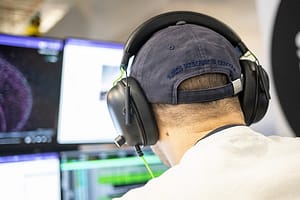Ah, the marvels of modern aviation! Have you ever wondered what makes those sleek metal birds soar through the skies with such grace and precision? Look no further than the unsung heroes of the cockpit: avionics. Strap in as we embark on a journey to uncover the secrets of these electronic wizards and how they work tirelessly to ensure your flight is smooth sailing from takeoff to touchdown.
Avionics unveiled: The tech behind the magic
Avionics 101: What’s in the toolbox?
Picture a toolbox filled with gadgets straight out of a sci-fi movie. That’s avionics for you! From GPS to flight management systems, these electronic wonders available via the likes of Pilot John International are the backbone of modern aircraft, providing pilots with the digital arsenal they need to navigate the skies safely and efficiently.
From humble beginnings to high-tech marvels
Avionics have come a long way since the early days of aviation. Gone are the days of relying on compasses and paper maps. Today, we’re talking about cutting-edge systems that can plot the most fuel-efficient route across the globe and even take over control if things get hairy up there.
Boosting performance: How avionics takes flight to new levels
Navigating with pinpoint precision
Forget about getting lost in the clouds! Avionics navigation systems, powered by GPS and other wizardry, ensure that pilots know exactly where they are at all times. Say goodbye to wrong turns and hello to smoother, more efficient flights.
Let’s talk about efficiency
Who doesn’t love saving fuel? With flight management systems calling the shots, pilots can optimize their routes to minimize fuel consumption and maximize time in the air. It’s like having your own personal flight planner, but way cooler.
Maneuvering like a pro
Ever wonder how pilots pull off those jaw-dropping maneuvers? Thank avionics for that! Fly-by-wire technology replaces clunky mechanical controls with sleek electronic systems, giving pilots the agility and precision they need to navigate even the trickiest of flight paths.
Safety First: How avionics keeps you safe in the skies
Avoiding mid-air mishaps
Nobody wants to play chicken with another plane at 30,000 feet. That’s where collision avoidance systems swoop in to save the day. With real-time alerts and traffic updates, pilots can steer clear of potential hazards and keep the friendly skies, well, friendly.
Weathering the storm
Mother Nature can be unpredictable, but avionics have her number. Weather radar and predictive systems give pilots the heads up on storms and turbulence, allowing them to chart a course around the rough stuff and keep passengers comfy and cozy.
When autopilot’s got your back
Autopilot isn’t just for lazy Sundays on the couch. In the world of aviation, it’s a lifesaver. Automated flight control systems take the reins when things get hectic, giving pilots a much-needed breather and ensuring that everyone lands safely, every time.
What lies ahead: The future of avionics
The rise of artificial intelligence
Buckle up, because AI is about to take avionics to new heights. With the power to analyze data in real-time and make split-second decisions, AI promises to revolutionize how aircraft are flown, making our skies safer and more efficient than ever before.
Battling cyber threats
As avionics become more connected, so too do the risks. Cybersecurity is top of mind for aviation experts, who are working tirelessly to keep hackers at bay and ensure that our digital skies remain safe and secure for all who venture into them.
Navigating the regulatory maze
Innovation is great, but it comes with its fair share of red tape. As avionics continue to evolve, regulatory bodies face the daunting task of keeping up with the pace of change. Finding the right balance between innovation and safety is key to ensuring that aviation remains the safest mode of travel.
Conclusion: Flying high with avionics
And there you have it, folks! Avionics may not be the flashiest part of flying, but they sure are the most important. From boosting performance to keeping us safe in the skies, these electronic marvels are the unsung heroes of aviation. So the next time you’re soaring through the clouds, take a moment to thank avionics for keeping you safe and sound.
Frequently asked questions (FAQs) about avionics
What are some common avionics systems found in modern aircraft?
Common avionics systems include GPS navigation, flight management systems (FMS), collision avoidance systems (TCAS, ADS-B), weather radar, autopilots, and engine management systems (EMS).
How do pilots interact with avionics systems?
Pilots interact with avionics systems through cockpit displays, control panels, and input devices such as keyboards or touchscreens. User-friendly interfaces enable pilots to access and control various avionics functions seamlessly.






Leave a Comment